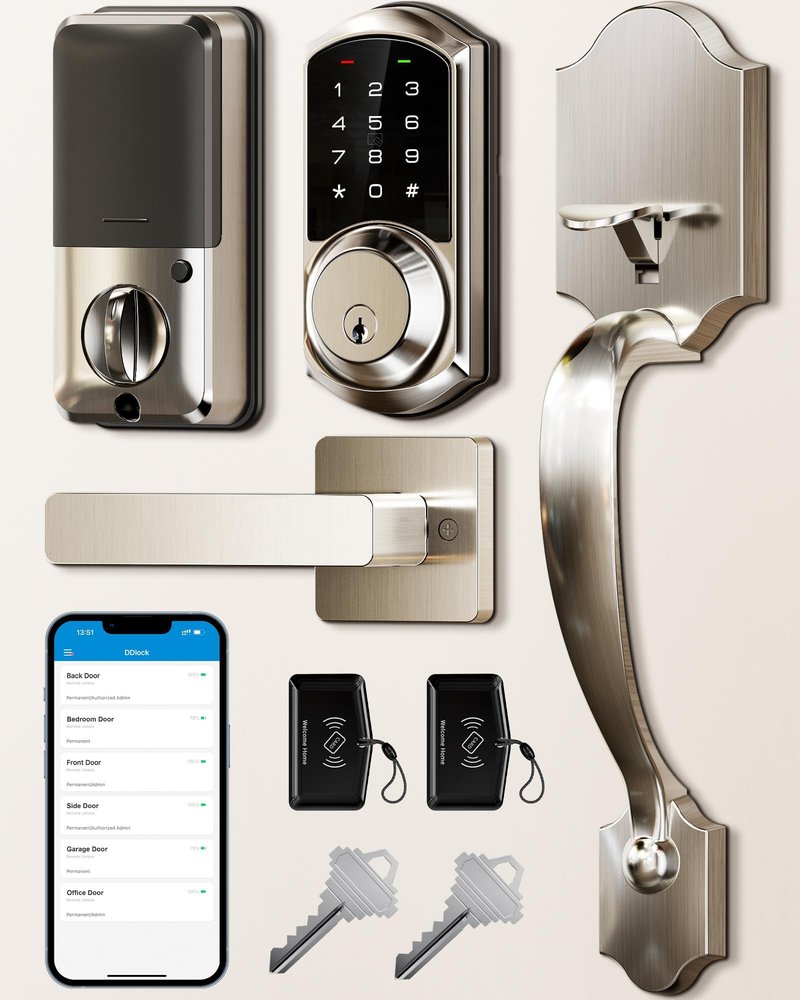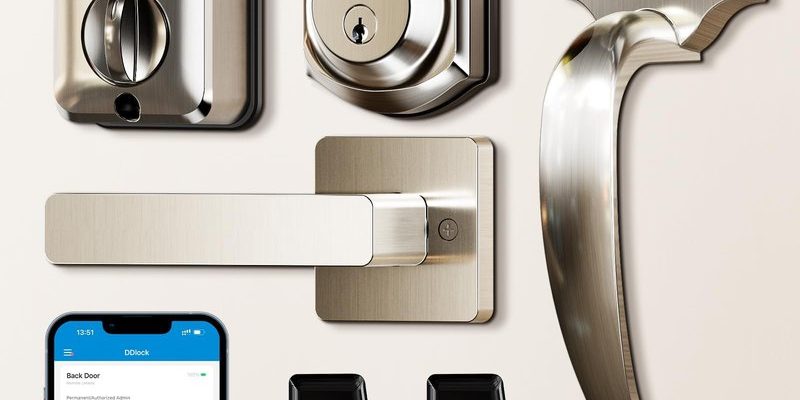
Here’s the thing: electronic handlesets (like Schlage, Kwikset, or Yale smart locks) are more than just batteries and buttons. They’re mini-computers with brains full of code, sensors, and tiny motors. When something goes wrong, the fix is sometimes easy, but it helps to know what you’re looking at before you start unscrewing panels or buying a brand-new remote. Let’s break down how to troubleshoot an electronic handleset that’s just not locking or unlocking—no matter how many times you tap, beep, or beg.
Common Reasons Your Electronic Handleset Isn’t Working
Before you dive into troubleshooting, it helps to know the usual suspects. Most electronic handlesets—whether from Schlage, Kwikset, or another popular brand—run into similar issues. Honestly, it’s kind of comforting to realize that even tech-heavy devices get tripped up by everyday problems.
Most often, problems trace back to:
- Dead or weak batteries—the classic culprit
- Mechanical jam—something physically stuck in the lock or latch
- Code or sync errors—the internal brain is confused or needs a reset
- Remote or keypad issues—the communication between devices isn’t working as it should
Think back: did the lock beep strangely? Did the keypad flash an odd pattern? Was there a grinding noise, or does it feel stiff turning by hand? Each bit of feedback, even the subtle stuff, can help pinpoint which part’s gone sideways.
How To Check and Replace the Batteries
Honestly, battery problems are so common, they deserve their own shoutout. Every electronic handleset—from fancy Yale smart locks to basic Kwikset Bluetooth models—needs healthy batteries to do their thing.
Here’s what you need to do if you suspect a battery issue:
- Find the battery compartment. It’s usually behind the inside cover of the lock. You’ll sometimes need a screwdriver, but many modern models have a small release tab.
- Remove and inspect the batteries. If they’re corroded or leaking, dispose of them safely. If they’re just old, swap in fresh ones of the recommended type—don’t mix brands or old with new.
- Check for the power-up sequence. Most locks flash a light, chirp, or show a startup animation when you put new batteries in. If your handleset’s totally silent, you may have a deeper problem with the wiring or the battery contacts.
You might be wondering: could a battery be low, not dead, and still cause issues? Absolutely. Low battery voltage can make the motor sound weak or unpredictable and lead to failed unlock attempts. Even if your lock doesn’t show a “replace battery” alert, it’s worth starting fresh. It’s the troubleshooting equivalent of “have you tried turning it off and on again?”
Diagnosing Mechanical Jams and Alignment Issues
So you’ve got fresh batteries and the lock still won’t cooperate. Here’s where things get a bit more hands-on. It’s possible the electronic handleset isn’t locking or unlocking because something inside the door is stuck or misaligned.
Signs of a mechanical issue include:
- The motor runs, but the deadbolt doesn’t move.
- You hear grinding, popping, or clicking noises.
- The lock works fine without the door shut, but jams when closed.
Let me explain how to check for these problems:
- Open the door and try locking/unlocking. If it suddenly works, the issue is with your door’s alignment, not the lock itself. Humidity, weather, or a settling house can nudge the door frame just enough to throw things off.
- Inspect the bolt and strike plate. Is the deadbolt scraping against the metal plate? Is there gunk or debris in the slot? Clean things up and see if the problem improves.
- Manually turn the lock. Using the thumb-turn or key, does the bolt move freely? If it feels stiff or stuck, lubricate with a dry graphite spray (never oil—oil collects gunk) and try again.
Mechanical issues don’t always need a pro. But if you see broken pieces or the bolt is totally frozen, calling a locksmith might save your sanity.
Resetting and Syncing the Electronic Handleset
Sometimes, electronic handlesets lose their mind. Maybe you changed the batteries and now nothing happens, or you tried pairing a new remote and the lock ignores you. This is where “reset” and “sync” come into play.
Each model handles resets a bit differently, but here’s a general process:
- Look for a tiny reset button (usually inside the battery compartment).
- Hold it down for 5–10 seconds, until the lock beeps or flashes.
- Some locks use a specific code sequence—check your manual or look up your model online.
Resetting will usually “forget” any stored codes or paired remotes, so you’ll need to reprogram these afterward.
After a reset, the handleset should walk you through setup—like pairing your remote, adding entry codes, and setting options. If it won’t enter setup mode, something inside (firmware, wiring, or deeper on the circuit board) might have failed.
Troubleshooting Remote and Keypad Problems
If your electronic handleset uses a remote, key fob, or keypad for entry, don’t overlook these as potential failure points. I’ve seen people replace perfectly good locks because the real culprit was a dodgy keypad or a remote that needed to be paired again.
Here are a few things to check:
- Replace the battery in the remote or key fob. Yes, they have their own batteries! They’re usually small coin cells, and a weak battery can cause missed or partial signals.
- Try the keypad directly. If the remote doesn’t work but the keypad does, the issue is probably in the wireless pairing, not the main lock.
- Check for interference. Lots of wireless devices and thick walls can mess with the signal. Move closer, or test with other wireless gadgets turned off.
Sometimes, remotes just need to be re-synced. Most handlesets have a pair button inside the battery compartment. Press it, then press the remote button within a few seconds. If it works, you’ll hear a beep or see a light flash. If not, double-check the manual—pairing steps aren’t always universal from model to model.
Looking for Firmware or Software Updates
Some of today’s most advanced electronic handlesets connect to your home’s Wi-Fi, Bluetooth, or even smart home hubs. Brands like Schlage and Yale regularly release firmware updates to fix bugs, patch security holes, or improve battery life. Skipping these can leave your lock stuck in a glitchy state.
Here’s what to look for:
- Mobile app updates. Open the lock’s companion app (if it has one), and look for firmware or software update prompts.
- Manufacturer website resources. Some brands post updates, troubleshooting code guides, or reset instructions online. Search for your exact model number.
- Follow the update instructions carefully. Interrupting a firmware update can “brick” your lock, so don’t pull the batteries or reset partway through.
If you’re stuck mid-update or see weird error codes, restarting the update process or resetting the lock may help. Sometimes, brands even offer remote support if things go really haywire.
When to Call For Help (And What Info to Gather First)
Honestly, not every handleset issue can be solved with fresh batteries or a reset. If you’ve tried everything above, but the lock is still stuck, it’s time to call in the pros—either the manufacturer’s support line or a trusted locksmith.
Before you call, grab:
- The lock’s model and serial number. Usually inside the battery compartment or on the edge of the door.
- A description of what’s wrong. Did it fail suddenly or get worse over time? Any weird lights, beeps, or error codes?
- Details on what you’ve already tried. This helps avoid going in circles with tech support.
Documenting the steps you took and any error lights/patterns will make tech support way more effective—trust me, they’ll thank you.
Comparing Electronic Handlesets: Features That Affect Troubleshooting
Every electronic handleset is a little different under the hood. Some, like basic Kwikset programmable models, only use a keypad and batteries. Others, like Schlage Sense or Yale Assure, add smart app controls, voice assistants, and all kinds of extra features.
Here’s why that matters for troubleshooting:
- Extra features add complexity. The more things a lock can do—like auto-lock, remote unlock, or guest codes—the more things can potentially go wrong.
- Universal vs. brand-specific remotes. Some “universal” key fobs might not work perfectly with your handleset’s code protocols. Always use the official remotes and accessories if possible.
- Backup options. Good smart locks offer a physical key as a backup. If not, you’ll want to be extra careful about battery health and keeping your codes up to date.
Different brands also handle resets, pairing, and troubleshooting codes in unique ways. That’s why keeping your manual or a digital copy handy is worth its weight in gold.
Wrapping It Up: Fixing a Fussy Electronic Handleset
Dealing with an electronic handleset that won’t lock or unlock feels like a much bigger hassle than it usually is. Luckily, most problems are things you can check yourself—starting with the simple stuff like batteries, moving on to alignment, and then digging into code resets and remote pairing. The key is to go step by step and not panic if it gets technical.
If all else fails, reaching out for help (with your lock’s info and error notes ready) gets you a faster solution. And remember: a little bit of regular cleaning and occasional firmware updates keep your smart lock acting like, well, a smart lock. So next time something’s acting up, you’ll know exactly where to start—and you won’t find yourself locked out on the porch wondering what on earth just happened.
